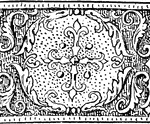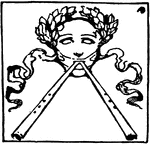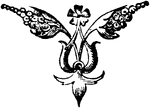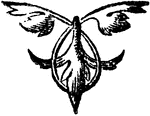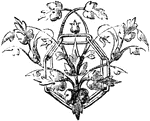
Roman Cornice
"Richly Ornamented Roman Ovolo. The ornamentation had to correspond with the massive character of Roman…
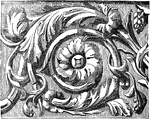
Ancient Roman Frieze
"Fragment of an Ancient Roman Frieze. The ornamentation had to correspond with the massive character…
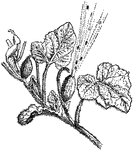
Squirting Cucumber
The Squirting or Exploding Cucumber (Ecballium elaterium) is a cucumber plant named for squirting a…
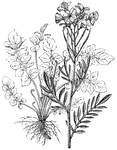
Cardamine
An illustration of: A, Inflorescence and cauline leaves; B, Radical leaves and root. Cardamine (Car-dá-mi-ne,…
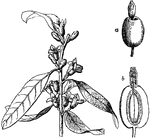
Oleaster
"Flowering Branch of Oleaster (Elaeagnus angustifolia). a, fruit; b, section of same." -Whitney, 1911
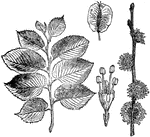
English Elm
Now known as Ulmus procera, the image shows a "Flowering Branch and Foliage of English Elm (Ulmus campestris),…
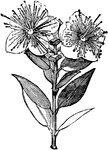
Myrtle
The Myrtle (Myrtus) is a genus of one or two species of flowering plants in the family Myrtaceae, native…

Fructification of Carrot Flower
An illustration of fructification of the carrot flower. Fructification is a term used in the plant morphology…
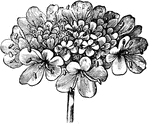
Inflorescence of Field Scabious
An illustration of the inflorescence of the field scabious. Knautia arvensis, commonly known as Field…
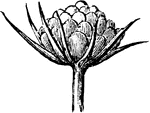
Young Inflorescence of Field Scabious
An illustration of the young inflorescence of the field scabious. Knautia arvensis, commonly known as…

Ray-floret of Field Scabious
An illustration of a ray-floret of the field scabious. Knautia arvensis, commonly known as Field Scabious,…

Ray-floret of Field Scabious
An illustration of a ray-floret of the field scabious. Knautia arvensis, commonly known as Field Scabious,…

Seed of Field Scabious
An illustration of the seed of the field scabious. Knautia arvensis, commonly known as Field Scabious,…

Comfrey
Comfrey (also comphrey) is an important herb in organic gardening, having many medicinal and fertilizer…

Comfrey Flower
Comfrey (also comphrey) is an important herb in organic gardening, having many medicinal and fertilizer…

Comfrey (Longitudinal Section)
Comfrey (also comphrey) is an important herb in organic gardening, having many medicinal and fertilizer…

Sepal and Fruit of Comfrey
Comfrey (also comphrey) is an important herb in organic gardening, having many medicinal and fertilizer…
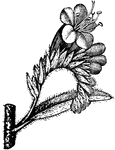
Viper's Bugloss Inflorescence
Echium vulgare (Viper's Bugloss) is a species of Echium native to most of Europe, and western and central…

Viper's Bugloss Flower
Echium vulgare (Viper's Bugloss) is a species of Echium native to most of Europe, and western and central…
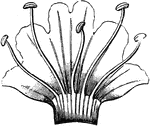
Viper's Bugloss Corolla and Stamens
Echium vulgare (Viper's Bugloss) is a species of Echium native to most of Europe, and western and central…

Plantain Flower and Bract
An illustration of a plantain plant flower and bract. In botany, a bract is a modified or specialized…

Encarpus
"In architecture, a sculptured ornament in imitation of a garland or festoon of fruits, leaves, or flowers,…
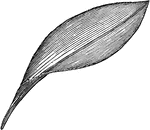
Endogenous Leaf
The image shows how endogens grow threw elongation internally. "Endogenous leaf, showing its parallel…
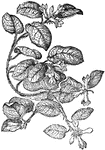
Trailing Arbutus
The Trailing Arbutus (Epigaea repens) is a spreading shrub in Ericaceae family of heaths.

Epiphyllospermous Frond
"Part of Epiphyllospermous Frond. In botany, bearing the fruit or spores on the back of the leaves or…

Club Moss
Lycopodiopsida is a class of plants often loosely grouped as the fern allies, and includes the clubmosses.…
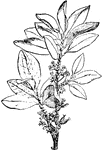
Coca
The flowering branch of the coca plant (Erythroxylon coca) best known for its use in the drug cocaine.
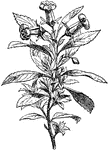
Escallonia
"Escallonia macrantha. Escallonia is a South American genus of trees or shrubs, of the natural order…
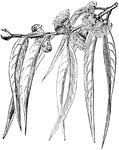
Blue Gum
A flowering branch of the Blue Gum Tree (Eucalyptus globulus), a tree in the Myrtaceae family of evergreen…
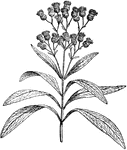
Ayapana
The Ayapana (Ayapana triplinervis) is a flowering shrub in the Asteraceae family of daisies.
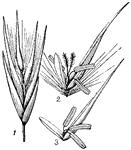
Reed
The common reed of the American and European reed swamps, growing from 5 to 12 feet high with leaves…

The Large Cane
The large cane, which forms the cane brakes of the southern states. It grows from 10 to 20 feet in height…
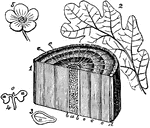
Section of Branch Showing Exogen
"Exogen. 1. Section of a branch of three years' growth: a, medulla or pith; b b, medullary sheath; e…
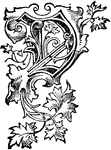
Decorative Floral V
An ornate capital V surrounded by leaves and vines, used at the start of a new chapter or heading.
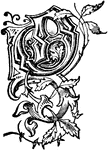
Decorative Floral O
An ornate capital O surrounded by leaves and vines, used at the start of a new chapter or heading.
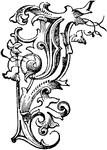
Decorative Floral J
An ornate capital J surrounded by leaves and vines, used at the start of a new chapter or heading.
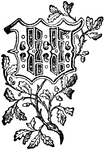
Decorative Floral W
An ornate capital W surrounded by leaves and vines, used at the start of a new chapter or heading.
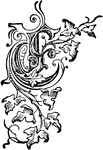
Decorative Floral E
An ornate capital E surrounded by leaves and vines, used at the start of a new chapter or heading.
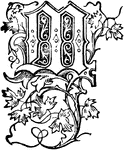
Decorative Floral M
An ornate capital M surrounded by leaves and vines, used at the start of a new chapter or heading.

Decorative Floral A
An ornate capital A surrounded by leaves and vines, used at the start of a new chapter or heading.

Decorative Floral D
An ornate capital D surrounded by leaves and vines, used at the start of a new chapter or heading.
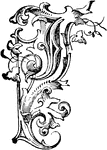
Decorative Floral I
An ornate capital I surrounded by leaves and vines, used at the start of a new chapter or heading.

Decorative Floral T
An ornate capital T surrounded by leaves and vines, used at the start of a new chapter or heading.

Decorative Floral B
An ornate capital B surrounded by leaves and vines, used at the start of a new chapter or heading.
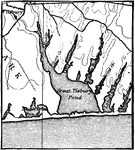
Bay-bar
A Bay-bar, with narrow inlet which leaves the water of the bay salty. South Shore of Marthas Vineyard.

Strawberry Flagellum
"In botany, a runner; a weak, creeping shoot sent out from the bottom of the stem, and rooting and forming…
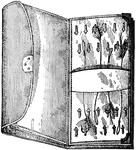
Fly Book for Fishing
"A case in the form of a book in which to keep fishing-flies. It has leaves of Bristol-board or other…
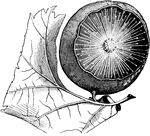
Oak Apple Gall
"Gall, or Oak-apple, produced by Cynips quercus-inanis, showing the internal cobwebby structure. Gall:…
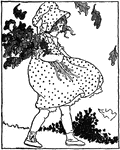
Girl Carrying Branches with Leaves
An illustration of a young girl carrying an armful of fall leaves.
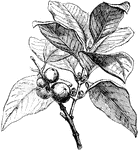
Branch of Gambooge
The Gambooge tree (Garcinia gummi-gutta) is a plant in the Clusiaceae family. The species was also known…
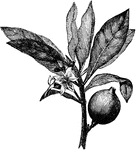
Huito
The Huito (Genipa americana) is a small tree with edible fruit in the madder family, Rubiaceae.
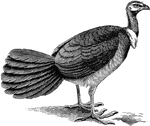
Brush Turkey
"Catheturus lathami, the "Brush Turkey" of Eastern Australia, is blackish-brown with greyish under surface,…

